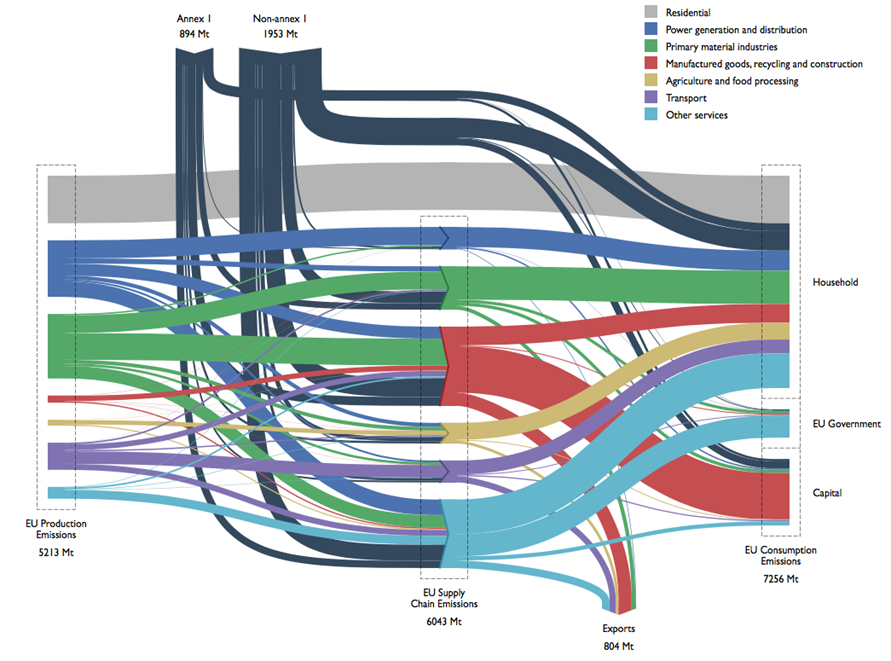Why energy, materials and products?
Existing international decarbonisation policies are not sufficient to meet the internationally agreed climate objective of limiting temperature rise to two degrees. Materials act as a carrier of industrial energy that allows, through the trade of products, the transfer of embodied emissions between sectors and countries. Studies have shown there has been an increase in emissions transfers via trade, which is left largely unaddressed by climate mitigation policies. Industrialised countries have managed to stabilise their production emissions, partially from increasing imports from developing countries. However, the use of materials and products has been completely overshadowed by policies focusing on deploying a low carbon energy supply. While these policies are important, resource consumption can also support climate change mitigation and presents an additional opportunity to address emissions resulting from trade as well as domestic emissions. At CIE-MAP we are investigating how a greater integration of resource efficiency, in terms of industrial energy, material and products can contribute substantially to abating emissions.

This figure shows the supply chain emissions from production to the final consumption of products embedded in EU consumption, including imports in and exports out of the EU. Production emissions in the EU in 2007 were 5,213 Mt CO2e, with the width of each bar on the left-hand side of the figure representing production emissions by sector, the conventional emissions accounting approach (both in the UK and internationally). When adding emissions embodied in imports (2,847 Mt CO2e) and subtracting emissions embodied in exports (804 Mt CO2e), the EU’s net traded emissions add 2,043 Mt CO2e to EU production emissions (the right-hand side of the figure). Around two thirds of imported emissions are from non-Annex I countries whose emissions on average continue to rise.
When accounting for the emissions embodied in products, the middle column in the figure, the emissions profile of sectors change. Services and manufacturing sectors combined directly produce 447 Mt (9%) of EU production emissions. However, the emissions embodied in these sectors across their respective supply chains account for 1,619 Mt (22%) and 1,869 Mt (26%) of EU consumption emissions. Around a third of emissions embodied in both product groups are generated outside EU territory. The EU is heavily reliant on energy-intensive materials extracted and processed abroad. 38% (622 Mt) of the emissions embodied in services is attributable to the primary material sectors and 32% (517 Mt) to electricity. The use and material intensity of resources along the supply chain is therefore a key leverage point where emissions can be reduced.